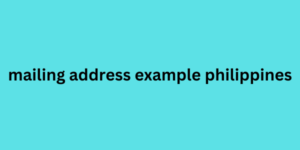Have you ever wondered how an email is delivered to your recipient in just a fraction of seconds? It is important for us, especially the email marketers, to know how does an email works so that the mail does not bounce back or reach the spam folder.
Following are the 5 ways an email reaches its destination i.e. the inbox of the users.
Your email starts with composing and sending an email using your mail client. A mail client is a software that sits on your desktop and allows you to create and receive emails. It basically stores your email so that you can access it even if the internet is not connected. Examples are web browsers like Hotmail, Gmail, or Yahoo Mail or it can be an application on your computer like Outlook, Thunderbird or Mail.
This in turn will send it to your router. A router’s functionmailing address example philippines is to give direction to the query from server to server and sends back to the recipient. In this case the router will send to your Simple Mail Transfer Protocol (SMTP) server whose job is to send email to the mail server of the recipient. Before the mail reaches the mail server of the recipient, it has to pass through the barriers. Most of the barriers happen at the server level because the server is a gateway into an entire system and if any malicious mail enters the server then it will affect the entire system.
So the mail server is protected by:

Firewall – is a barrier which protect the system from viruses.
Spam filter- checks whether the content of the mail is malicious or the mails are known spammers or not.
After the mail reaches the mail server, it has to face with other barriers as well to reach the recipient’s router. They are:
Reputation check – checks your history or patterns of sending emails, your reputation whether you have been sending spam mails or not.
Authentication check – checks to see who you say you are or your id proof and checks whether the sender is showing problematic behavior or not.
After clearing the above mentioned barriers, the mail will reach the recipient’s router. From here the mail will pass through yet another check to reach the mailbox and i.e.
Spam filter- which will check for text as spam which is managed by the mailbox settings, whether the user has marked the sender as spam or not.
If the email clears even this spam filter, then it gets send to 3 different places as per today’s standards of email.
Their Mail Client if the users using it
Their Mail App that you use on your mobile or tab
Their Web Mail
These 3 have been mentioned separately because there is a protocol in place which allows this email system to work, which is called the post office protocol or POP3. This is the older one. There is a newer version that most of the systems use now i.e. IMAP4 which has a lot of additional benefits. One of the major benefits is that it allows synchronization of our action across devises which was not seen in POP3. That means the emails read, unread or deleted in web mail will be synchronized in app as well, which was not seen in case of POP3.